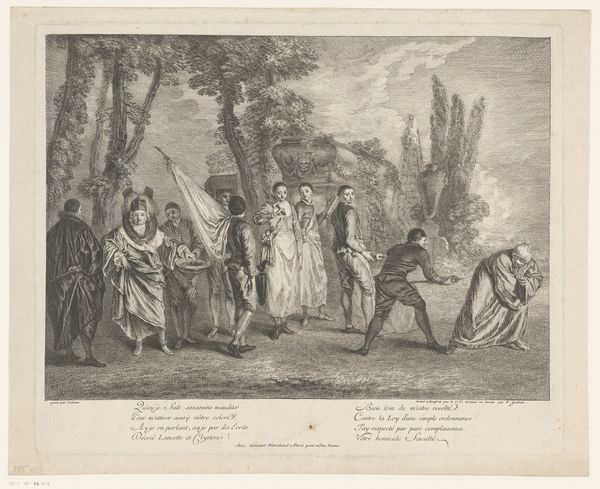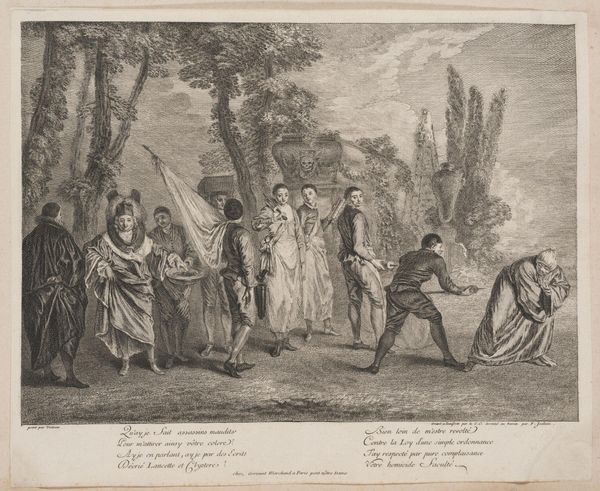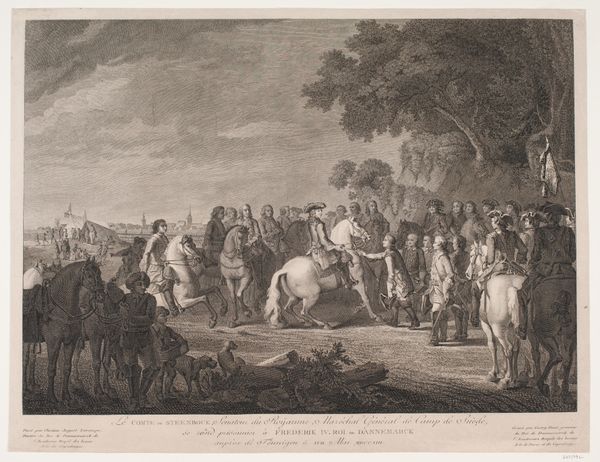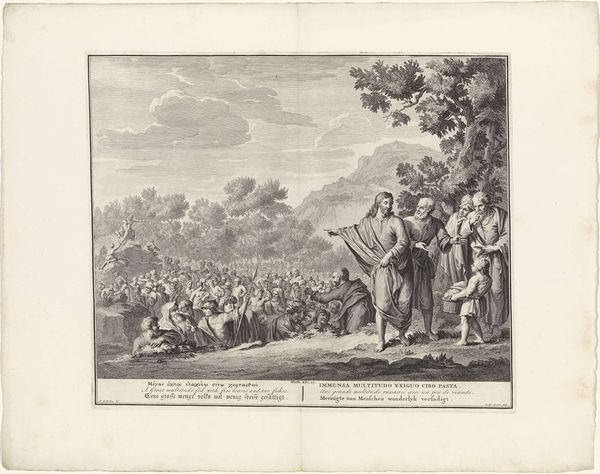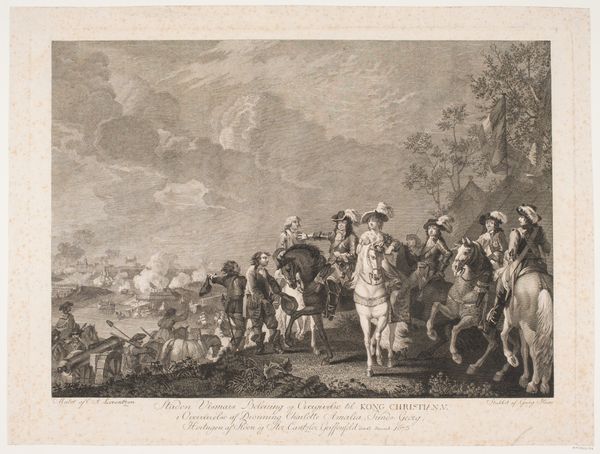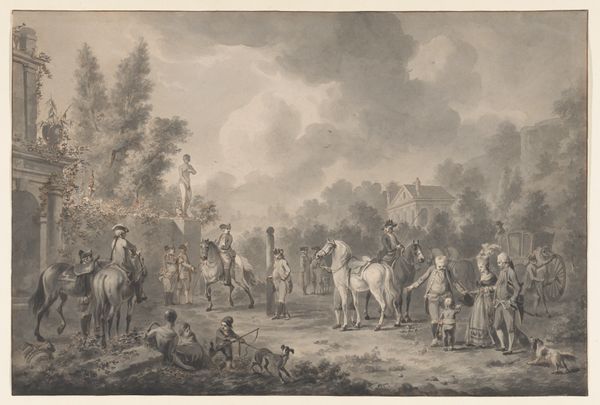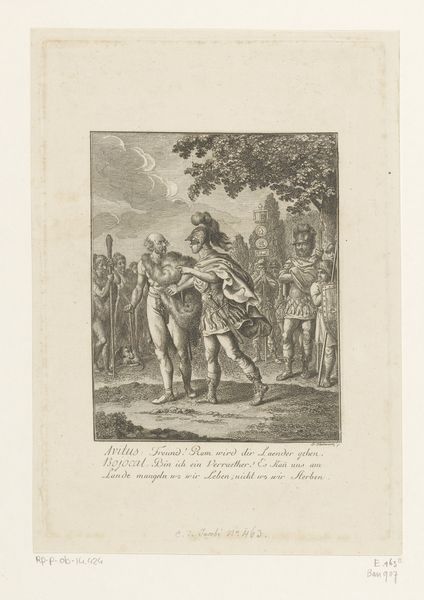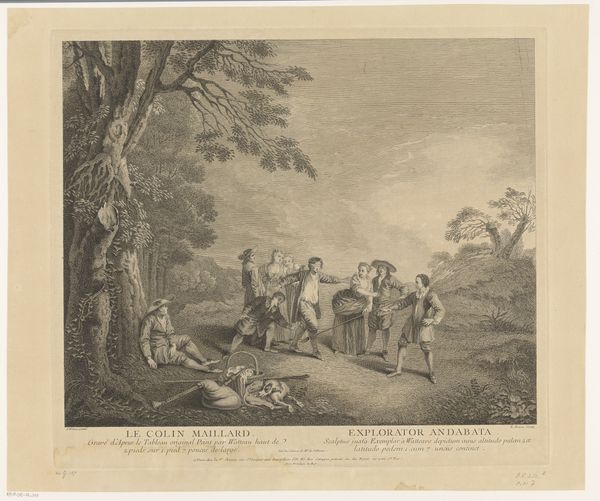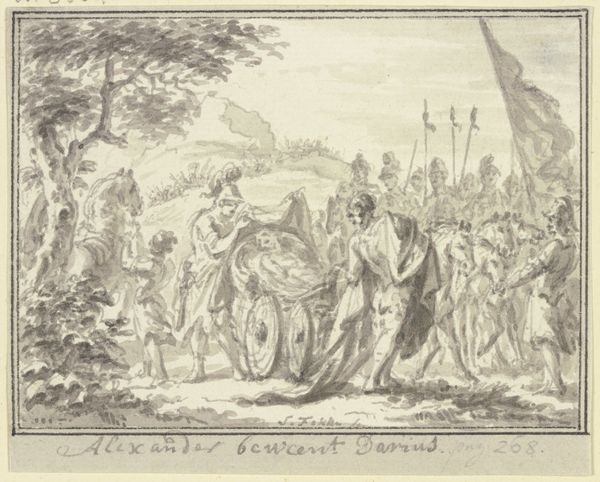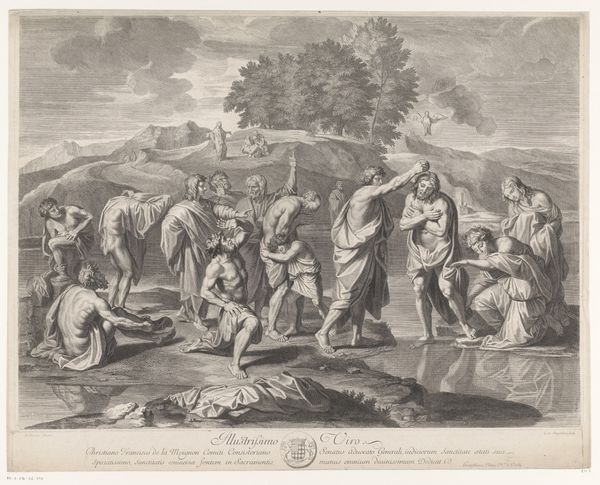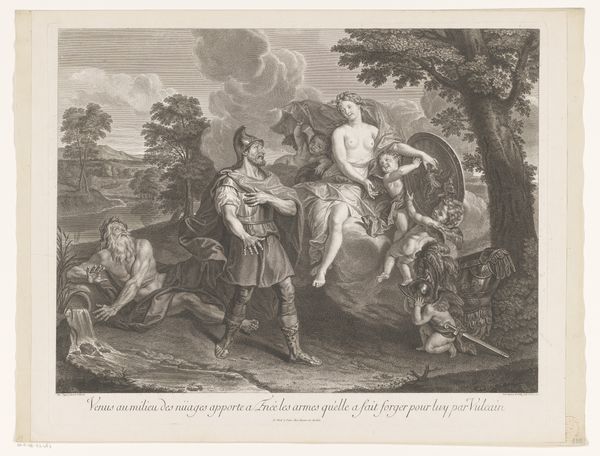
print, engraving
#
baroque
# print
#
old engraving style
#
landscape
#
figuration
#
genre-painting
#
history-painting
#
engraving
Dimensions: height 660 mm, width 980 mm
Copyright: Rijks Museum: Open Domain
Curator: Take a look at this print, entitled "Stoet gevangenen in landschap," or "Procession of Prisoners in a Landscape." It's attributed to Domenico Rossetti and believed to date sometime between 1660 and 1736. What are your immediate thoughts? Editor: Bleak. There's a distinct feeling of desolation. The figures are rendered with fine, precise lines, yet the overall composition, particularly the bowed heads and constrained posture, evokes a palpable sense of hopelessness and resignation. Curator: Indeed. It's important to consider the print's context. Images of defeated enemies, captives in tow, were commonplace during that period. It reinforced societal hierarchies and the power of the ruling elite through the dissemination of this print in European society. The artist uses the procession to illustrate Roman dominance, specifically as told through textual Latin additions beneath the landscape of the main picture. Editor: That makes sense. The formality in both the composition and rendering technique suggests a desire for control and order in contrast to the chaos the captured figures supposedly represent. It appears almost stage-managed with figures frozen in melancholic states, as the landscape mirrors the captive prisoners gloominess. I notice also that some type is present in the lower register—do we have a sense of the artist's thoughts or beliefs surrounding it? Curator: While there's no firm consensus, the inscription certainly alludes to the subjugation of others. During that period, there was great circulation of engravings and the exchange of illustrated manuscripts containing information to specific factions within society or social/political messaging aimed at other parties. With those historical implications combined with what seems to be an allegorical scene, it feels reasonable to understand this artwork as both didactic and representative of its time. Editor: The controlled, precise engraving serves the propaganda perfectly, wouldn’t you agree? It seems almost devoid of emotion on a deeper level, which only highlights the emotional weight of the subject depicted and ensures a chilling effect to its presentation. Curator: Precisely. Looking back, “Stoet gevangenen in landschap” is a stark reflection of its era, an intersection between artistic skill, sociopolitical power, and visual culture, don’t you agree? Editor: I do agree; viewing the interplay between the cold detachment of Baroque-era artistry and its historical significance provides a much more compelling appreciation for this specific image.
Comments
No comments
Be the first to comment and join the conversation on the ultimate creative platform.
